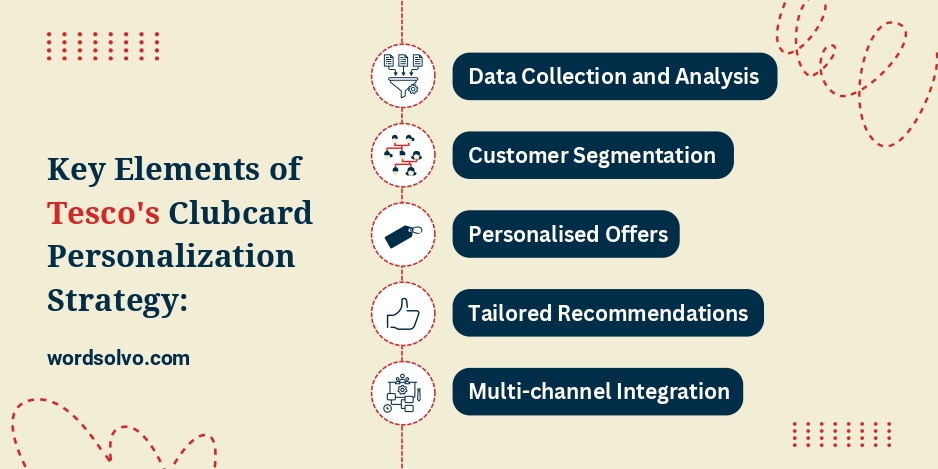Tesco’s history in the Uk and abroad is impressive. The grocery goliath has achieved continuous success by offering a range of products across different countries, making them sustain their positioning at the frontline of retail business. Most recently, Tesco has come up with a sophisticated online grocery strategy enabling users to have a seamless digital experience.
Tesco’s e-commerce efforts cannot be neglected in this post-COVID period. This Tesco case study offers important insights into the efforts made by Tesco's Online strategy.
Table of Contents - Summary
A Brief History of Tesco
Tesco Digital Strategy
Tesco Clubcard App
A Brief History of Tesco
In order to understand why Tesco became so famous to students as a case study, we need to know the backgrounds first. Initially, the company started with five market stalls when founded in 1919 by Jack Cohen. Demobilisation funds were used to buy surpluses of golden syrup and fish paste. Jack Cohen bought a tea shipment from Thomas Edward Stockwell (TES) whose initials were later used in the name Tesco by adding the first two letters of Cohen (CO). The company was floated on the London Stock Exchange in 1947 as Tesco Stores (Holdings) Limited. Tesco’s rapid growth was due to the acquisitions of 800 shops during the 1950s and 1960s.
The expansion of the range of product offerings also contributed to the growth of the company. Tesco started to sell clothing as well as household goods under the Delamare brand. Tesco online business was started in 2001 after the obtaining of a 35% stake in GroceryWorks. The “stack’em high, sell’em low” business model was revolutionary, especially in a time of austerity. The introduction of the revolutionary clubcard followed by investments in internet retailing has made the retailer obtain a prominent position in the world as an eCommerce grocer.
Let’s discuss Tesco digital strategy in this case study for a better understanding of how Tesco Online works to ensure business success.
Tesco Digital Strategy
By the early 2000s, Tesco had established itself as a prominent player in the brick-and-mortar retail sector. However, the rise of e-commerce and changing customer behaviour presented challenges and opportunities. Recognising the potential of online shopping, Tesco strategically decided to leverage digital technology to expand its reach and improve customer convenience. Tesco Digital Strategy implemented in its digital transformation has been discussed in the following portion.
Key Elements of Tesco's E-commerce Strategy:

User-Friendly Online Platform
Tesco has focused on creating an intuitive and user-friendly online shopping platform. The website and mobile app have been designed to provide customers with a seamless browsing and shopping experience, mirroring the ease of navigating a physical store. The online platform has allowed the business to expand its reach beyond targeted physical stores, catering to a wider customer base. This has allowed Tesco groceries to enter into new geographical regions.
Product Catalogue and Assortment
Tesco digitised its extensive product catalogue, offering a wide range of products online, including groceries, household items, electronics, clothing, and more. This ensured that customers could find and purchase virtually everything they needed through the online platform. The convenience and accessibility of the online platform as part of Tesco digital strategy have contributed to increasing sales and revenue by attracting a growing number of customers.
Personalization and Recommendations
Building on its Clubcard loyalty program data, Tesco has implemented personalised recommendations for online shoppers. Analysing purchase history and preferences have assisted the Tesco online platform to suggest relevant products and personalised offerings, thereby providing a seamless and customised experience. The integration of data from the Tesco Clubcard app into the online shopping experience has leveraged personalised interactions, increasing customer loyalty and ensuring repeat purchases.
Delivery and Pickup Options
Tesco online provides customers with flexible options for receiving their orders. The options include home delivery for those who prefer the convenience of doorstep delivery, as well as in-store pickup for those who wanted to collect their orders at a nearby Tesco location.
Logistics and Fulfilment Optimisation
Tesco has also focused on optimising its logistics and fulfilment processes by making investments in advanced warehouse management systems, route optimization software, and last-mile delivery solutions to ensure timely and efficient order processing and delivery. The investment in technology-driven logistics optimisation has reduced delivery times, lowered operational costs, and improved order fulfilment processes for the Tesco home delivery option.
Tesco Clubcard App
The Clubcard loyalty program was launched in the early 1990s with the aim to reward loyal customers. However, this move not only serves as rewarding repeat purchasers but also has laid the groundwork for data gathering and offering personalised recommendations. Implementing data analysis into understanding customer behaviour based on Tesco Clubcard app has helped the company offer a seamless experience.
Key Elements of Tesco's Clubcard Personalization Strategy:

Data Collection and Analysis
Tesco systematically collects transaction data from Clubcard purchases, capturing information on customer buying habits, product preferences, and shopping frequency. Advanced data analytics tools have been employed to mine insights from this wealth of data. Within a year of the Tesco Clubcard app, the company overtook Sainsbury which was worth twice the value of Tesco the previous year. A unique customer ID is given to every purchase that creates millions of data points. This has created opportunities for more than 16.5 million customers subscribe to Tesco Clubcard app only in the UK. Tesco has leveraged Big Data analysis and algorithms to predict customer purchasing habits in the near future as per customer preferences and trends.
Customer Segmentation
Collecting personalised information has allowed Tesco to customise its customer segmentation and marketing efforts. As per Sir Terry, the productivity of the marketing efforts has been improved between 300 and 1000 percent after the implementation of data analytics and Tesco Clubcard app.
Personalised Offers
Tesco online offers personalised discounts and offers to individual customers that makes each customer experience relevance and exclusivity. This, in turn, incentivises repeat purchases, thereby enhancing customer loyalty.
Tailored Recommendations
By analysing past purchases, Tesco provides customers with tailored product recommendations, both in-store and online. This personalised guidance enhances the shopping experience and introduces customers to new items aligned with their preferences.
Multi-channel Integration
Tesco has integrated the Clubcard across its digital platforms, enabling customers to access personalised promotions and offers whether they were shopping in-store or online. This seamless experience encourages cross-channel engagement, marking the success of the Tesco Clubcard app in the context of Tesco home delivery.
This Tesco digital transformation case study would help you understand the way the company introduced the Tesco digital strategy to grow its online business. With the help of the Tesco Clubcard app and data analytics, Tesco online has been able to target more customers continuously.

